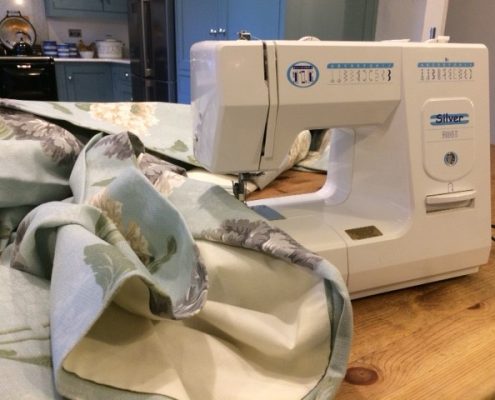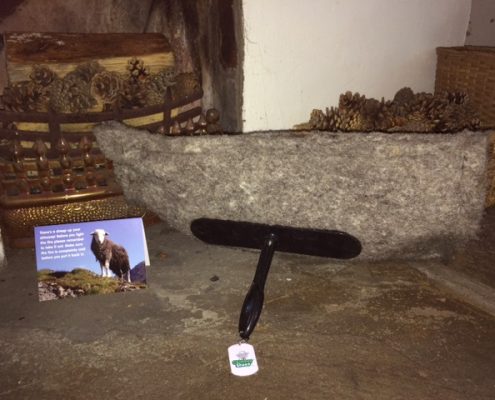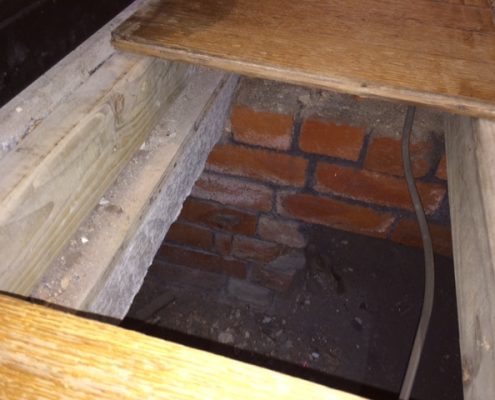3 Solutions for a Draughty Period Home
Living in an old house has many benefits, particularly if you enjoy period style and love your home’s individual personality quirks. However, we know how difficult to heat draughty old houses can be and now that colder weather is here again, it’s time to take action! Life can be hectic and it’s easy to put off jobs for another day, so let’s focus on just 3 simple DIY solutions for the worst-offending chills, and perhaps this winter may be just that little bit cosier than the last.
1. Invest in Thermal Curtains
 It is said that eyes are ‘windows to the soul’, and we believe that beautiful windows give a property real soul too. Original period windows are worth cherishing but single-glazing is understandably less energy efficient than modern double-glazed units. One solution worth considering is secondary glazing which really has come a long way in recent times, but cold draughts and heat loss can also be effectively kept at bay with thermal curtains. And as a bonus, they can also inject a lot of style at the same time. Thermal curtains could also be hung floor to ceiling, wall to wall for extra style and warmth, or used across external doors to keep hallways warmer too.
It is said that eyes are ‘windows to the soul’, and we believe that beautiful windows give a property real soul too. Original period windows are worth cherishing but single-glazing is understandably less energy efficient than modern double-glazed units. One solution worth considering is secondary glazing which really has come a long way in recent times, but cold draughts and heat loss can also be effectively kept at bay with thermal curtains. And as a bonus, they can also inject a lot of style at the same time. Thermal curtains could also be hung floor to ceiling, wall to wall for extra style and warmth, or used across external doors to keep hallways warmer too.
How about having a go at making your own? The following link might help. It’s a brilliant step by step guide from the National Trust and Lauren Guthrie, Finalist in the BBC’s Great British Sewing Bee.
https://www.nationaltrust.org.uk/features/how-to-make-thermal-curtains
Happy Sewing!
2. Insulate the Chimney
An open chimney is like leaving a window open all the time, and in fact worse than that because chimneys are designed to draw smoke and air up and out of a building. Expensive centrally heated air is sucked out and cold air is sucked in to replace it, causing the draughts we feel. According to tests carried out by The University of Liverpool, at least 4% of household heat is lost up the chimney. Insulating your chimney could save an average of £50 per year and possibly more in some properties.
 We don’t usually recommend specific products, but we have been so impressed with our Chimney Sheep draught excluder that we thought we would just this once, plus they have won lots of awards.
We don’t usually recommend specific products, but we have been so impressed with our Chimney Sheep draught excluder that we thought we would just this once, plus they have won lots of awards.
Obviously, being sheep farmers as well as surveyors, the initial attraction is clear, but the simplest solutions really are the best. The Chimney Sheep is a thick layer of felt made from 100% Herdwick sheep wool with a handle on one side. It comes in a range of sizes or can be custom made to fit any chimney. Unlike a chimney balloon which needs to be inflated and deflated whenever you want to light a fire, the Chimney Sheep can easily be pushed up and down whenever you want. In addition to insulating the chimney from draughts, it also prevents dirt, dust and wildlife from entering the room and cuts down on chimney wind noise as well. A great, straightforward solution.
3. Seal Gaps between Floorboards
It is common for Victorian and Edwardian homes to have been constructed with suspended timber floors at ground level. This means wooden floorboards laid on top of timber joists with a ‘crawl space’ underneath. This space is usually about 1-2 feet deep and is ventilated from the outside to prevent dampness and rot.
If your floorboards are carpeted this isn’t really a problem but the modern taste for exposed wooden floors means that any gaps between floorboards can let in a lot of cold air and who likes cold feet? One solution is to seal any gaps with a purpose-made draught tape product. These are quick, easy and clean to install, often without the need for any special tools or adhesives. You’ll wish you’d done it years ago!
For more tips and solutions for looking after your home this winter see our previous blog, ‘Winterproof your Home’ by following the link: https://jonesbattye.com/1534-2/





